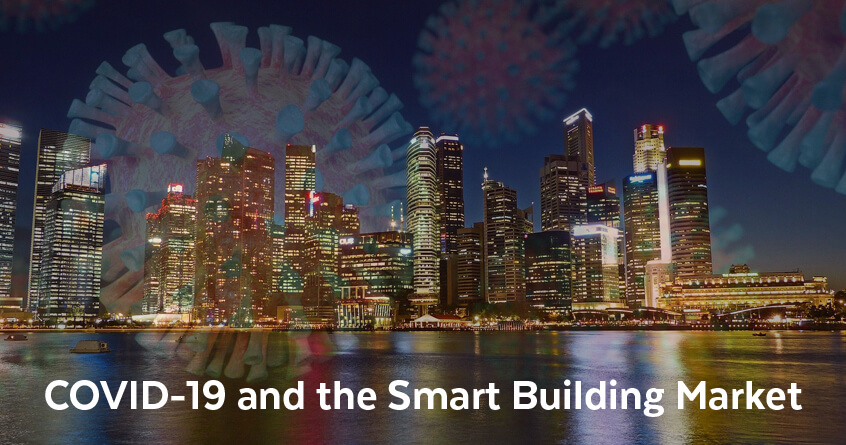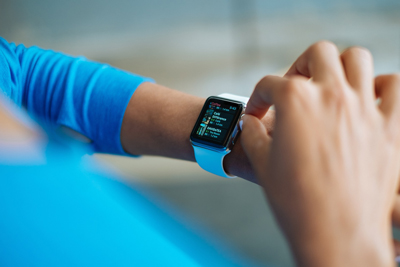The coronavirus pandemic has reached 65 million reported cases worldwide as of December 2020. Vaccines are on the horizon, but no one knows exactly when the ordeal will end. Safety has been top of mind for everyone and these considerations have worked their way into nearly every aspect of our daily lives. Work processes we formerly took for granted are forever changed and these changes are evident across every industry and vertical—including the SMART building.
A smart building is more than bricks and mortar. It is the leading edge of architecture, “alive” with interconnected technology that shares information collected by its numerous systems, the goal of which is to provide the best user experience possible.
Whether a smart commercial building or a smart home system, these buildings are devised to collect and provide information (in real-time) to help the user to make quality decisions that boost operations.
Covid-19 is changing what we invest in. Firms have increasingly had to adopt home office and other flexible work adaptations. There are those who speculate that the physical workplace has become irrelevant. This position appears to be mistaken. According to a survey conducted by the global architecture firm Gensler, after one month of working from home, a vast majority of respondents want to get back to the workplace.
As the modern workplace opens up again, there will be a demand to redesign working environments to accommodate tenants’ drastically changing needs. The pandemic has made it clear that there is an urgent need for smart, intuitive building technology for the future. This article will discuss some of the significant changes in our society that are beginning to appear due to COVID-19.
Social Distancing Technology
According to the Centers for Disease Control and Prevention (CDC):
Social distancing, also called “physical distancing,” means keeping a safe space between yourself and other people who are not from your household.
To practice social or physical distancing, stay at least 6 feet (about 2 arms’ length) from other people who are not from your household in both indoor and outdoor spaces.
Social distancing should be practiced in combination with other everyday preventive actions to reduce the spread of COVID-19, including wearing masks, avoiding touching your face with unwashed hands, and frequently washing your hands with soap and water for at least 20 seconds.
Social distancing is becoming the norm. As businesses prepare to reopen, enforcement of social distancing protocols will remain imperative. Using manual labor for enforcement is ineffective and costly. There are smart solutions that can help ensure proper social distancing enforcement, such as:
- Video: Video analytics can be designed to detect if people are wearing masks, can monitor the distance between people, and can determine the number of people in a facility.
- LIDAR: Light detection and ranging (LIDAR) emits laser pulses to an object, measures the time it takes to get back, and then provides a 3D image that shows the object’s distance. Businesses and other organizations can use this technology to keep a safe space between people in a facility.
- RFID: With radio-frequency identification (RFID), tags are used to track, position, and inventory items. Organizations can also use this technology in social distancing enforcement (i.e., people wearing tags will be alerted when they are too close to one another).
Visitor Management Systems
Visitor Management Systems (VMSs) are poised to play a vital role in reducing risks of COVID-19 in the workplace. A VMS can be used as the first line of defense in an office in the following ways:
- Pre-registration Emails: A pre-registration email can lessen health risks by pre-screening visitors, advising guests about the facility’s health and safety procedures, and what to expect upon arrival.
- Health and Safety Questions: Obtaining information regarding visitors’ health and travel history adds a valuable protection layer for employees.
- Contact Tracing: Contact tracing can be vital in the light of COVID-19. VMSs help mitigate risks by automatically comprising a trail of activity. Also, collecting necessary information such as a phone number or email address will allow an organization to notify visitors if they were exposed to the virus while on the premises.
It is essential to note that all data should be collected with a strong consideration for privacy and should not be overreaching in any way.
Infection-Fighting Technology
Across many industries (i.e., airports, hospitals, and leisure facilities), firms are already using smart building technologies to identify infections and reduce their spread. Some examples:
- Tokyo’s Narita International Airport uses infrared cameras to measure passengers’ body temperatures to determine if they have a fever.
- Many hospitals use washroom sensors to track whether the staff is washing their hands for an appropriate length of time.
- Another smart solution used by these industries includes reprogramming BMSs to manage indoor humidity levels that minimize the survival rate of viruses.
- White light disinfection LED technology is being employed for patient and health safety.
There is some real question about whether these smart technology solutions are appropriate for a commercial work environment. This technology can be seen as invasive and could be tough to employ due to privacy concerns. Historically, employee monitoring has received a good deal of employee pushback for understandable reasons.
In spite of the discomfort with some of the more intrusive aspects of smart building technology, safeguarding health has become increasingly important to most people. Smart solutions need to be more flexible and sustainable than ever before.
The Future
As our world gingerly prepares to re-enter commercial workplaces, it is critical for enterprises to ensure all occupants’ health and wellbeing. People need to feel safe in stores and offices again. Judicious smart building technology choices can help accomplish this.
That being said, the application of smart building solutions is not limited to post-pandemic challenges. This technology can tackle many other long-term business needs, such as improving space efficiency, employee productivity, employee and customer satisfaction, and risk management. These state-of-the-art technologies allow business owners to continuously future-proof their working environments when choosing the right set of smart solutions.
For further reading about smart buildings, check out our blog.

